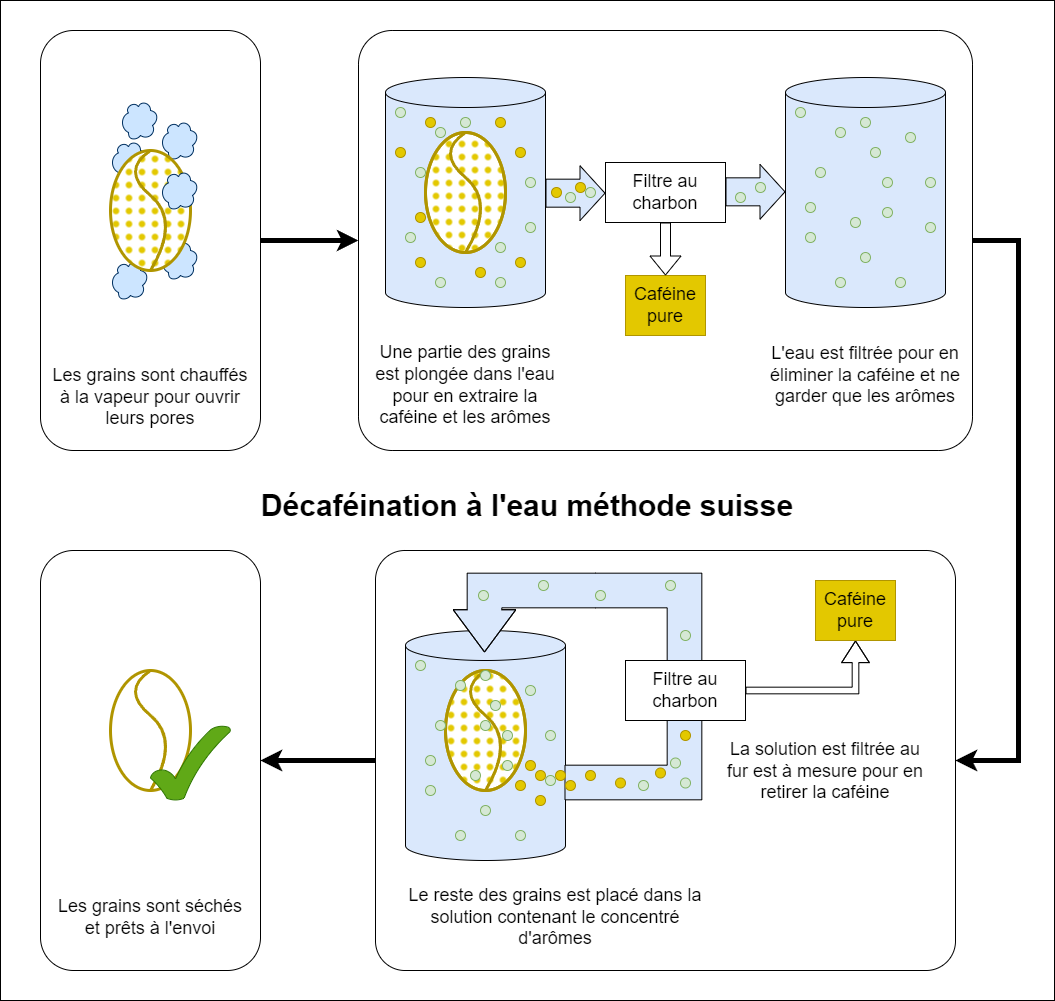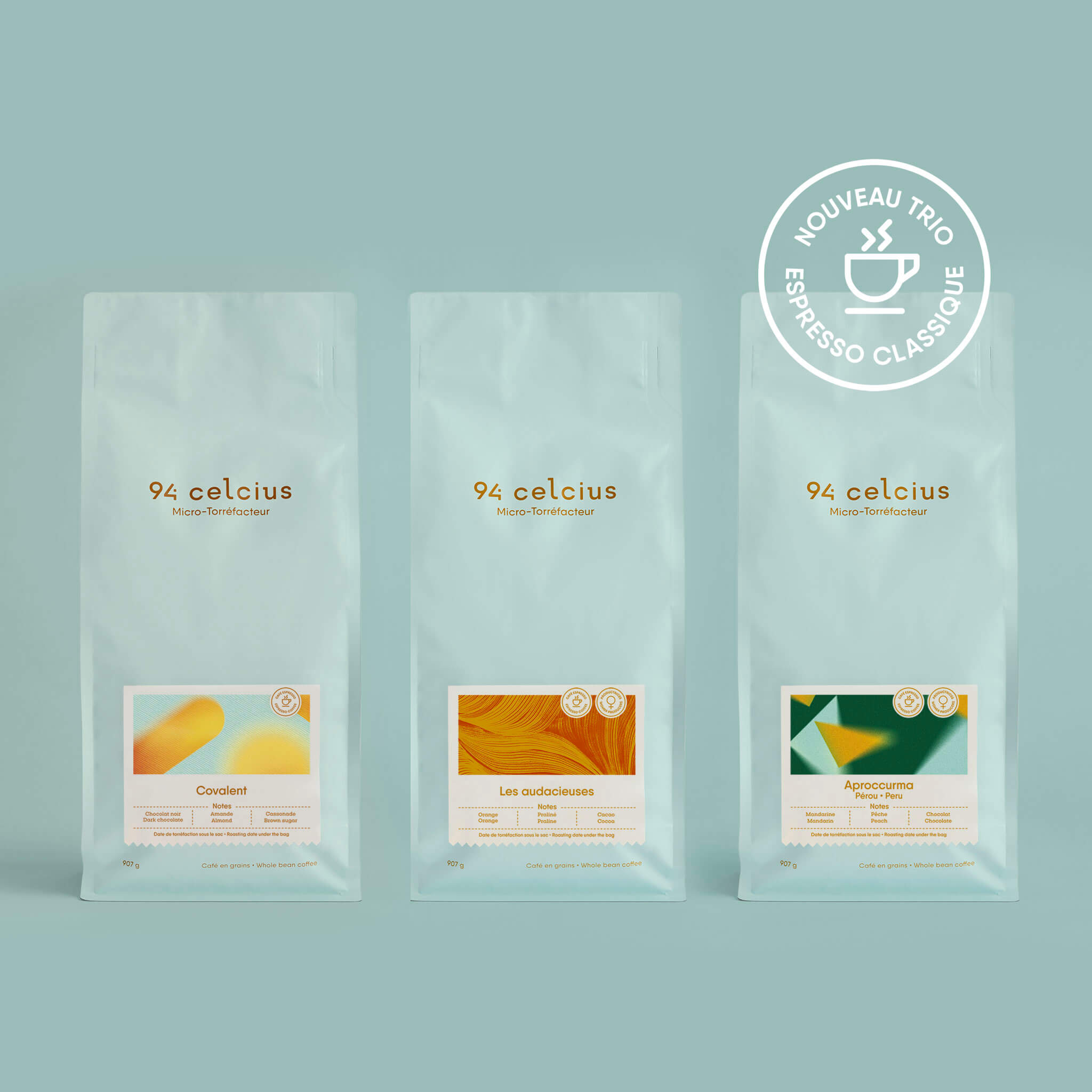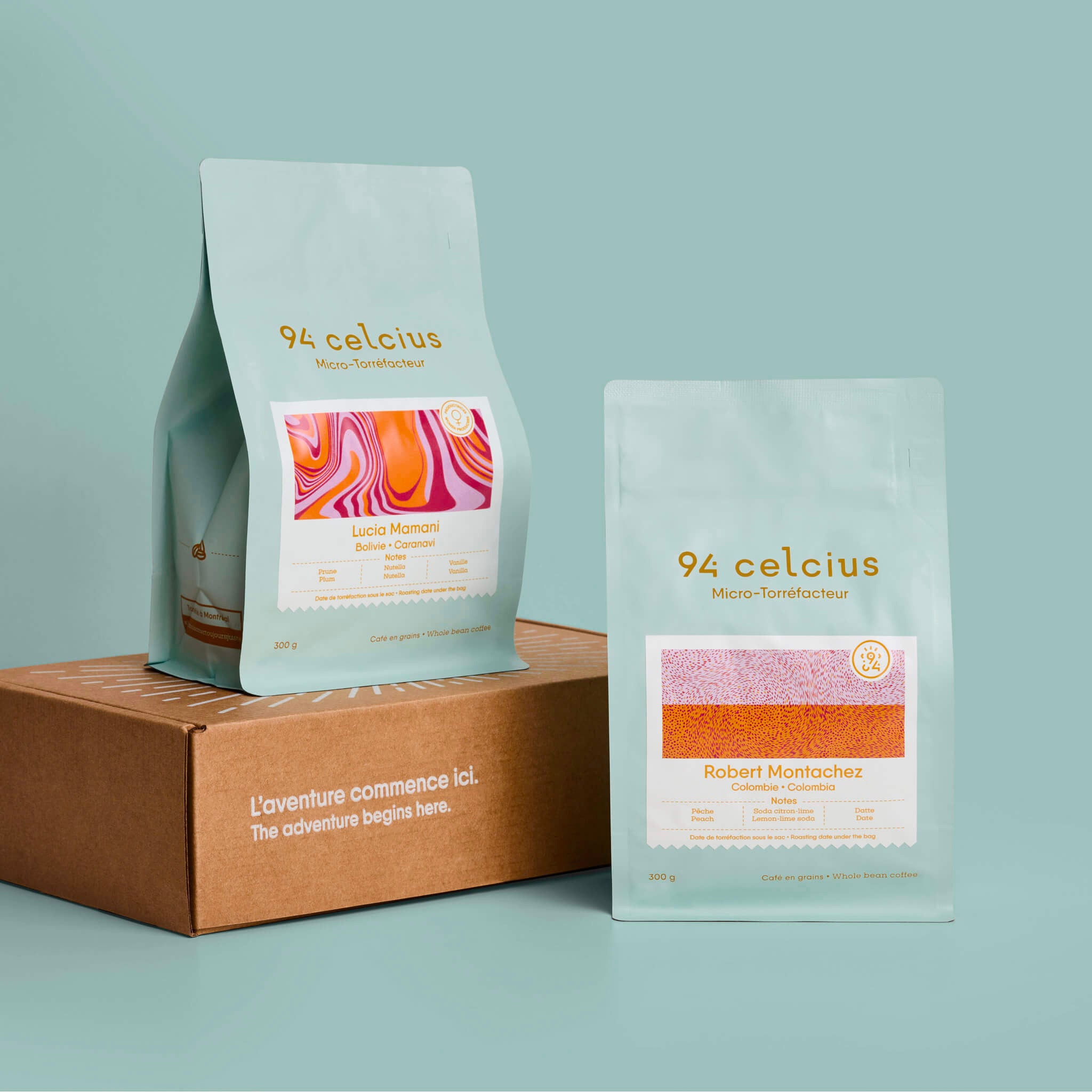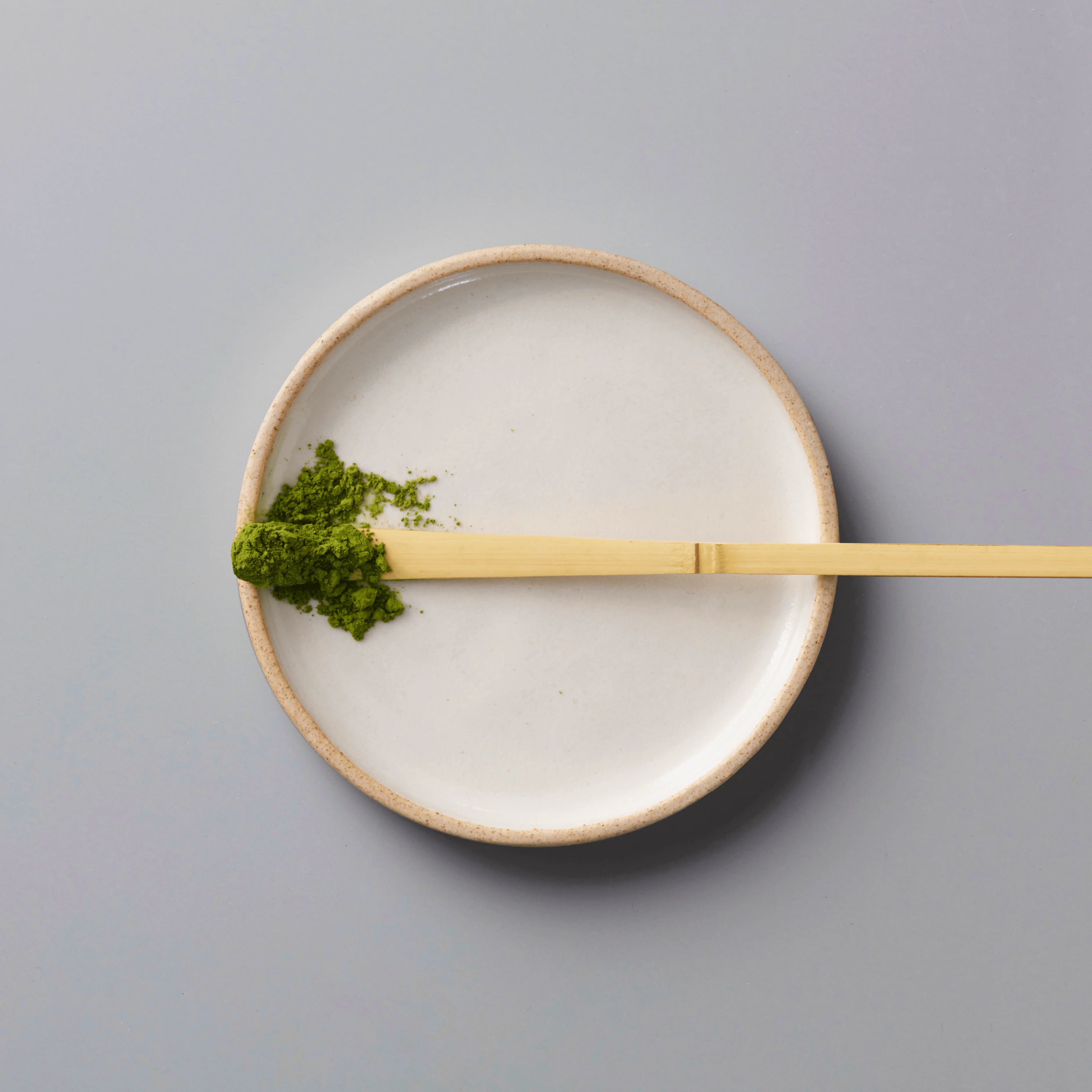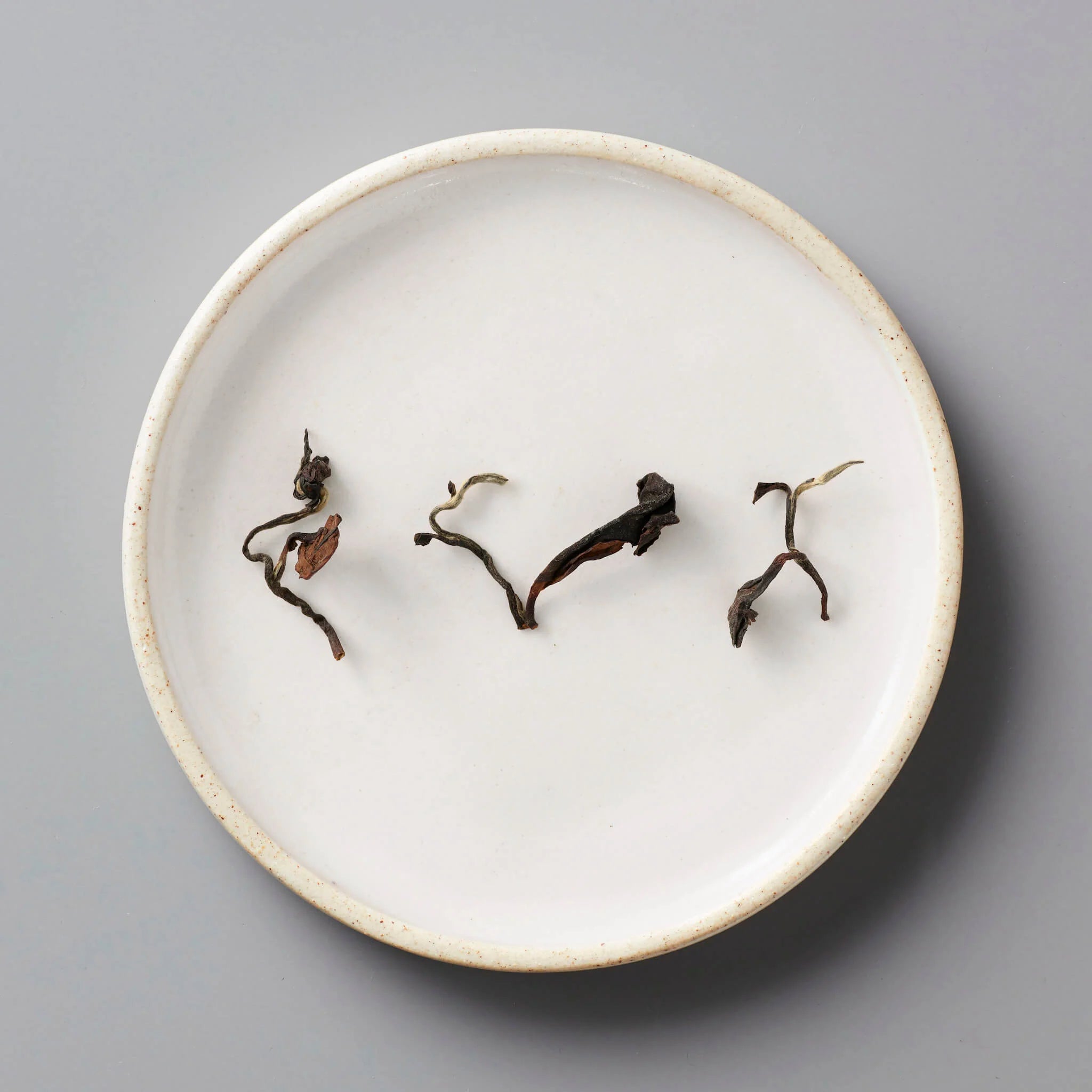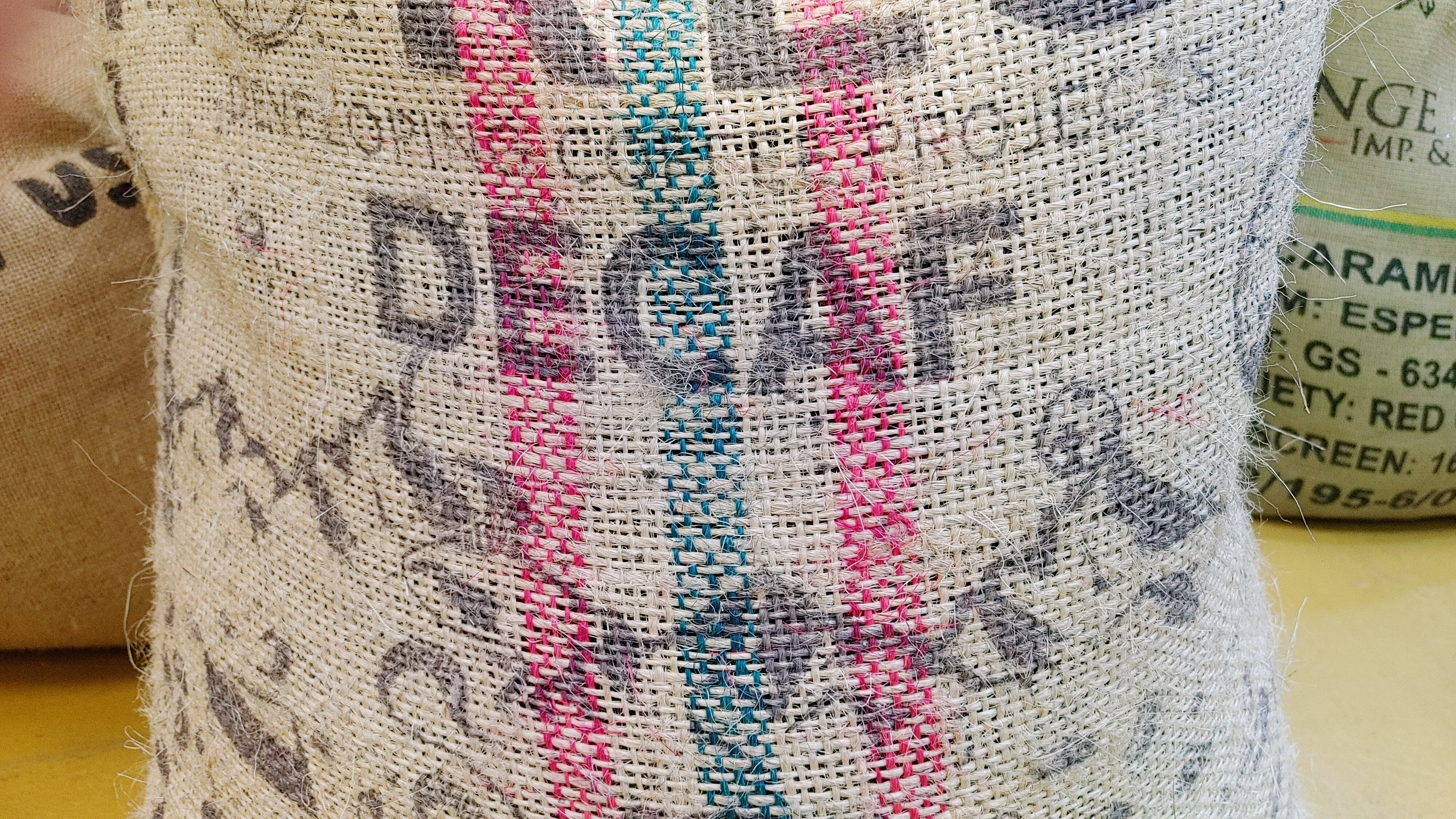You've just received your precious bag of 94 Celcius coffee and you've got a lot of questions?
Our "Getting started in the world of coffee" series is here to help you take your first steps into the world of specialty coffee. We'll be covering topics such as storage,extraction and the basics of roasting, among others.
Welcome, and please don't hesitate to ask us your questions!
Caffeine: what is it and how does it work?
Before diving into decaffeination methods, it's essential to understand what caffeine is and what effects it has on our bodies. Caffeine is a psychoactive compound naturally present in various plants, including coffee, tea, cocoa and guarana. In coffee, this molecule is one of the most sought-after for its stimulating properties, but it can also have disadvantages for some people.
The main benefits of caffeine
-
Reduced need for sleep: By binding to adenosine receptors (the molecule responsible for the sensation of fatigue), caffeine temporarily blocks drowsiness signals. The result: you feel tired less quickly and stay more alert.
-
Energy boost: By increasing the production of dopamine and noradrenalin, caffeine provides a boost, improving concentration and responsiveness.
-
Mood enhancement: By slowing the reabsorption of dopamine, caffeine prolongs the feeling of well-being provided by this pleasure hormone.
Possible side effects
Despite these benefits, caffeine is not without its side effects, especially when you're sensitive to it:
- Increased blood pressure: High caffeine consumption can contribute to hypertension in some people.
- Increased anxiety: Excessive nervous stimulation can exacerbate anxious or nervous states.
- Deterioration in sleep quality: Although caffeine keeps you awake, it can also delay sleep onset or fragment the sleep cycle.
- Prolonged effect: the effects of caffeine can be felt up to 12 hours after consumption, potentially disrupting nocturnal rest.
For all these reasons, some people prefer to opt for decaffeinated coffee, so that they can continue to enjoy the taste of coffee without suffering the undesirable effects of caffeine.
Coffee and its caffeine content
Caffeine content according to coffee variety
Caffeine content varies according to coffee species and growing conditions. On average :
- Arabica coffee: Between 0.8% and 1.4% caffeine.
- Robusta coffee: between 1.7% and 3.5% caffeine, significantly higher than Arabica.
At 94 Celcius and most specialty coffee roasters, Arabica coffee is often preferred for its aromatic complexity and smoothness. The caffeine content of Arabica coffee before decaffeination is around 1.2%, and then drops to around 0.1% after the decaffeination process. This is equivalent to removing 90% to 99% of the caffeine contained in the bean.
Why choose decaffeinated coffee?
There are many reasons to choose decaffeinated coffee over conventional coffee:
- Caffeine sensitivity: Some people experience palpitations, anxiety or headaches with even moderate amounts of caffeine.
- Medical constraints: Health professionals sometimes recommend limiting caffeine, for example in cases of pregnancy or cardiovascular disorders.
- Taste and habit: Some people simply love the taste of coffee, but don't want the stimulating effect.
Decaffeinated coffee therefore offers an interesting alternative for continuing to enjoy the aroma of coffee, its fruity or chocolate notes, without fearing the excitement or nervousness that can sometimes accompany it.

